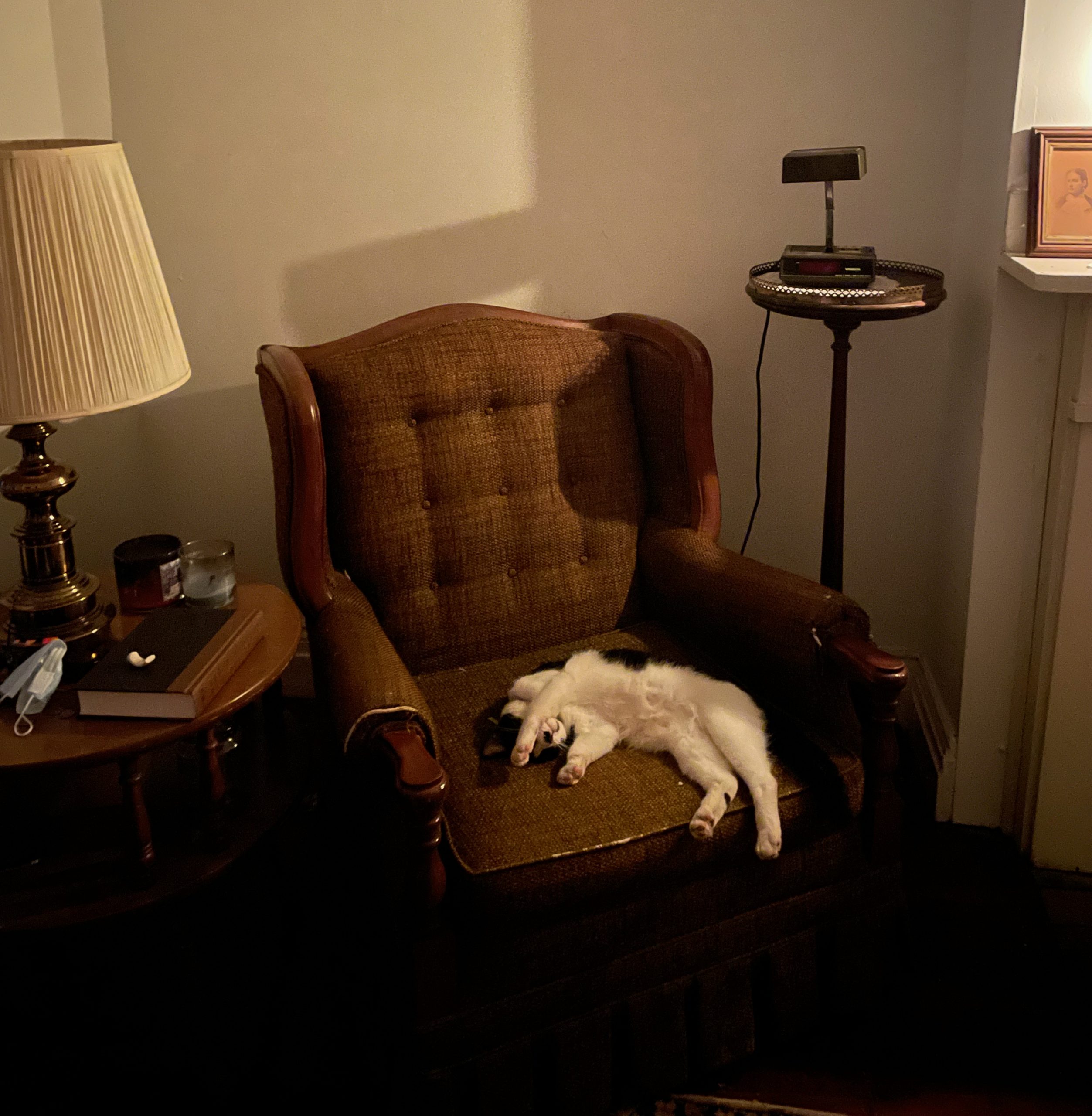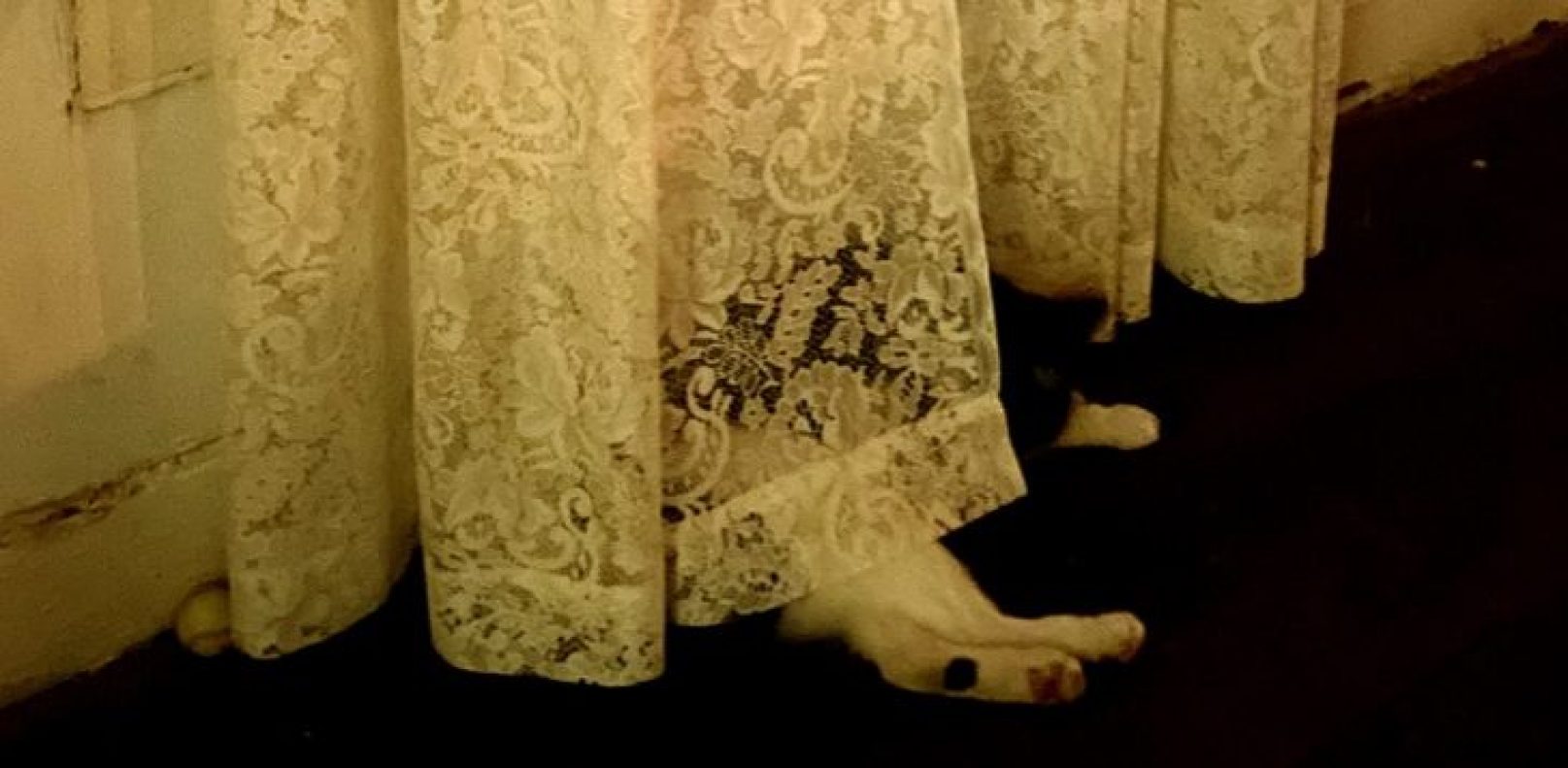From Mac Woolley
There are roughly 128.45 million households in the U.S., and it is estimated that one of every three households have at least one cat. That makes there out to be around 42.3 million house cats. This number only really starts to mean something when it is compared to the amount of outdoor community cats, 70 million.
On a summer afternoon, one of those cats decided to follow me to my porch. I thought I recognized it as one of the many outdoor cats in my neighborhood, but this one seemed different. They did not have a collar on but were obviously somewhat socialized. I sat with them for a little while and then went into my house. When I opened the door and walked in, the cat carefully followed me to the door frame. They stood there for a moment, sniffing around. I had been having cat fever around that time, so I called over to encourage their entrance, and they listened.
After half a can of tuna and some careful examinations of my house, the cat seemed to get comfortable. I didn’t know exactly what to call them, but the combination of coming from outside and the persistent itching, I named the cat Fleabag.
Fleabag became a regular after that day. Our relationship grew stronger each time. Fleabag started taking long naps and spending hours in my house, and I stopped supervising their exploration.

Then August 1st arrived. New neighbors were moving in next door, and I was looking forward to greeting them with a cake or just a friendly introduction, but before I could do anything like that, they came to my front door with Fleabag in their arms. They asked if the cat was mine. I said no. They asked if I knew whose it was. I said that it just roams around like an outdoor cat does. They thanked me and said they were going to the vet to get its fleas removed and get it checked for a microchip. I closed the door and was devastated by the news. Part of me thought it was good Fleabag was getting a home, but part of me thought Fleabag’s home was the outdoors, and the removal from their natural home was an atrocity. I quickly jumped to the atrocity route and looked everywhere to justify it.
Sure enough, there is a non-profit organization dedicated to the safety and preservation of outdoor cats. The Alley Cat Allies is their name. One of their statements reads, “As the national experts on cats, Alley Cat Allies works to inform the public on the truth about cats.” With a few other things about outdoor cat rights, I was ready to pin the Alley Cat Ally manifesto on the neighbors door.
According to the Alley Cat Allies, all domestic cats as we know them fall under the Felis Catus species regardless of how socialized they might be. Socialization varies from cat to cat and can change drastically over one cat’s life. Socialization is a spectrum but it is generally broken up into three categories: the feral, the strays, and the pets. Feral cats live outdoors unassociated to humans. Stray cats may have had some experience living indoors with humans but they either lost or left their homes and are at different levels of comfort living outdoors. Over time a stray cat will become feral if the conditions are right. Cat expert John Bradshaw said, “Cats still have three out of four paws firmly planted in the wild, and within only a few generations can easily revert to the independent way of life that was the exclusive preserve of their predecessors some 10,000 years ago.” Pet cats are the cats that are comfortable living with people. They can be strictly indoor cats or an indoor/outdoor cat. The root of a pet cat is that they are reliant on people for everything. Feral cats typically cannot become pet cats unless they are taken in at an early age because as the years of living away from people go up, the harder it is to re-condition the cats to live with people. However, pet cats can become feral cats out of necessity if they are left outside on their own for long enough. Each category of cat can live a healthy and fulfilling life in their respective homes, outdoor or indoor. The term the Allies give to unowned outdoor cats is “community cat.” They say, “Community cats have a wide range of behaviors and degrees of socialization, but they generally do not want to live indoors and are unadoptable.”
After all this digging around on the website, and finding all the charts and infographics about outdoor cats, Fleabag started to look more and more like a cat who could use a home. While cats can live fulfilling lives outside, and even an extremely socialized cat might still belong outdoors, Fleabag’s affinity towards the indoor life might point towards the conclusion that they wanted or needed a home inside.
Just when I began to accept that Fleabag’s new life with my new neighbors wasn’t the worst thing in the world, something happened. After a few days of not seeing Fleabag, a meeting occurred in front of the house. My neighbor and someone who claimed to be Fleabag’s true owner met with Fleabag in between them in front of my house. My neighbor called out the name they attributed to Fleabag and the so-called owner said, “Ya’ll ain’t naming my cat.”
Whether or not this person had been the owner the whole time, it confirmed that Fleabag was going to have a home to retreat to after a long day of wandering.
While my outdoor cat story ends with someone swooping in, it does not mean that all outdoor cats need to be adopted. There are a lot of cats out there whose home is the outdoors, and making sure you think about this before you take them in is a very important thing.

